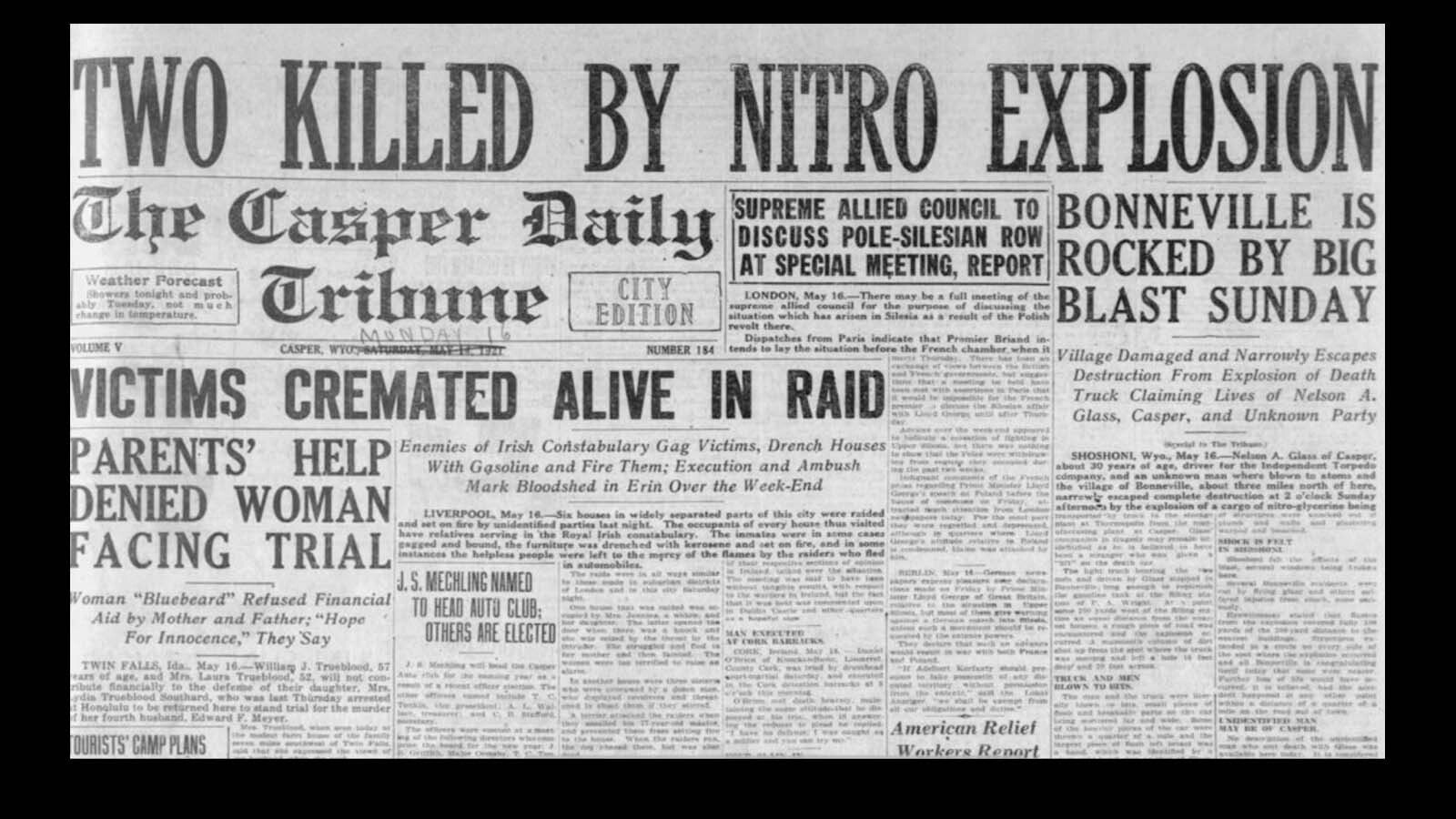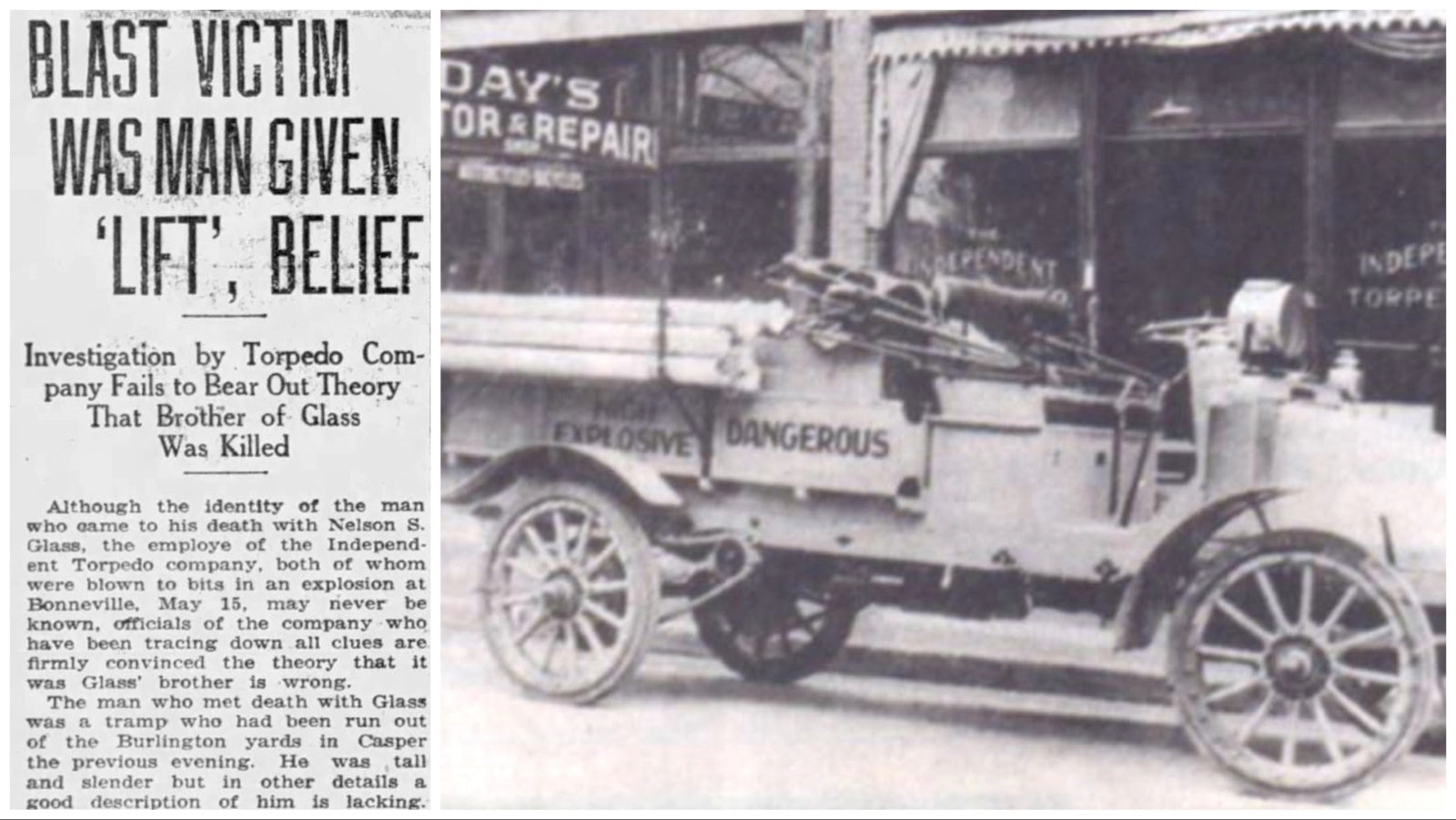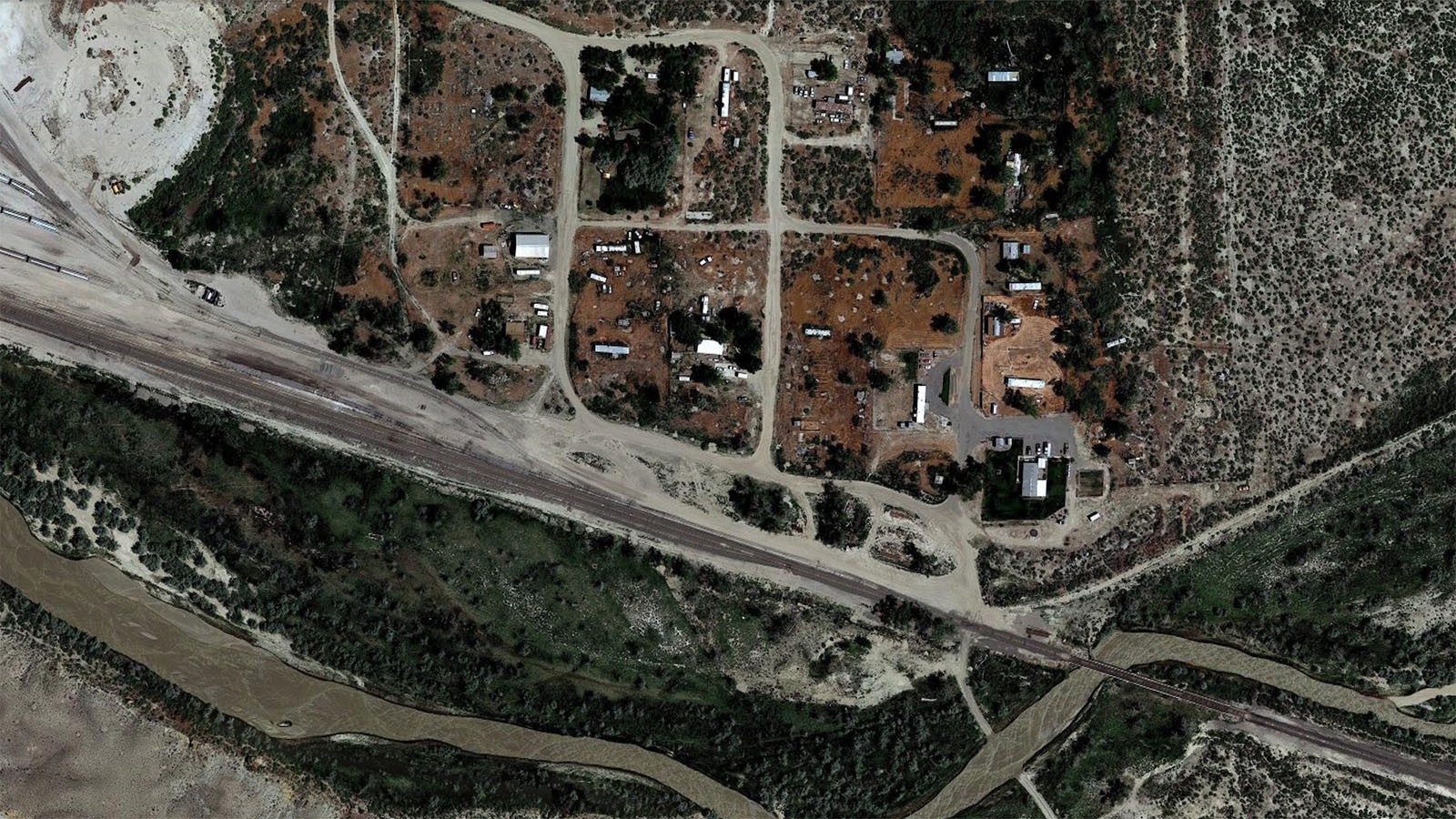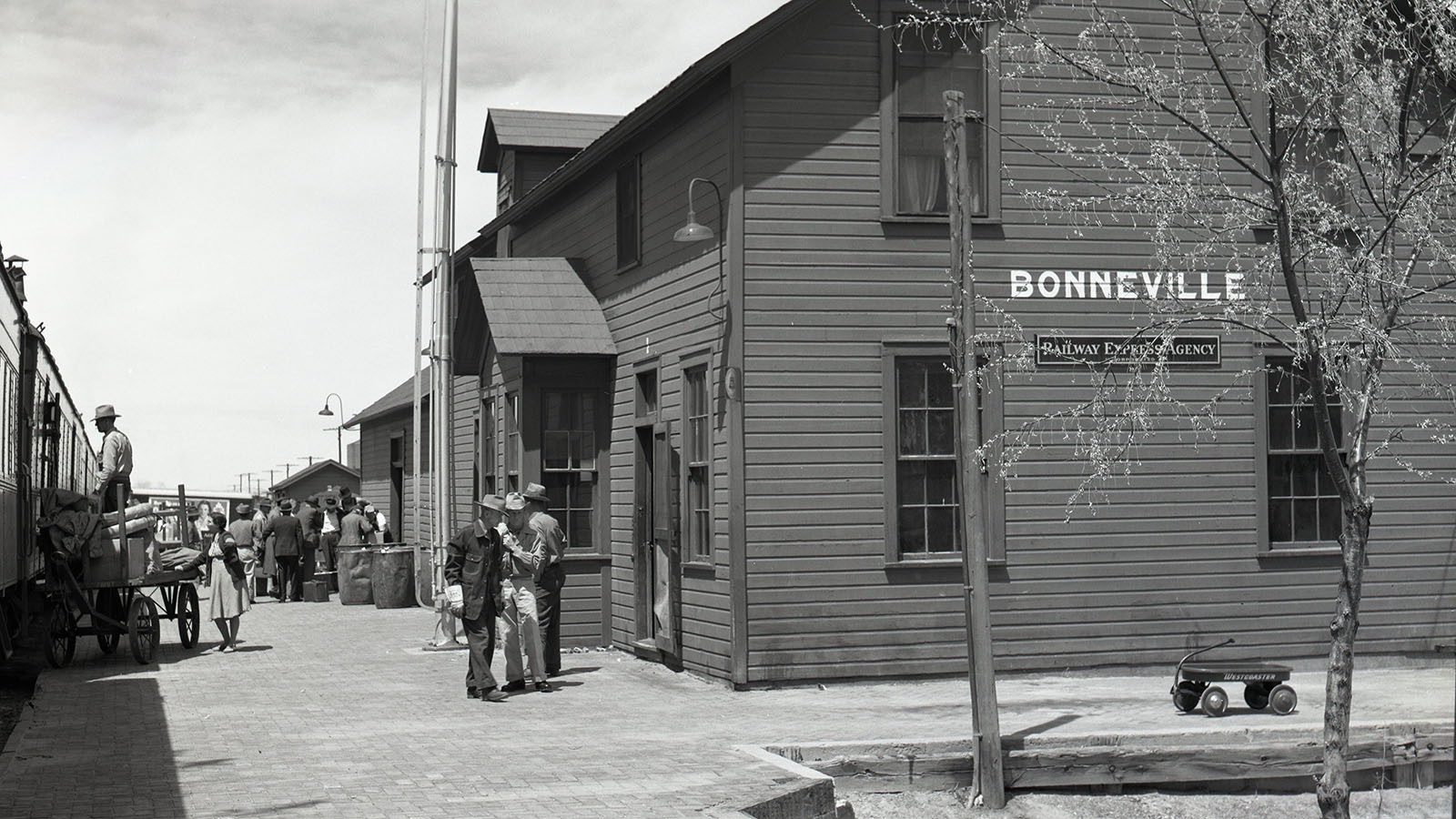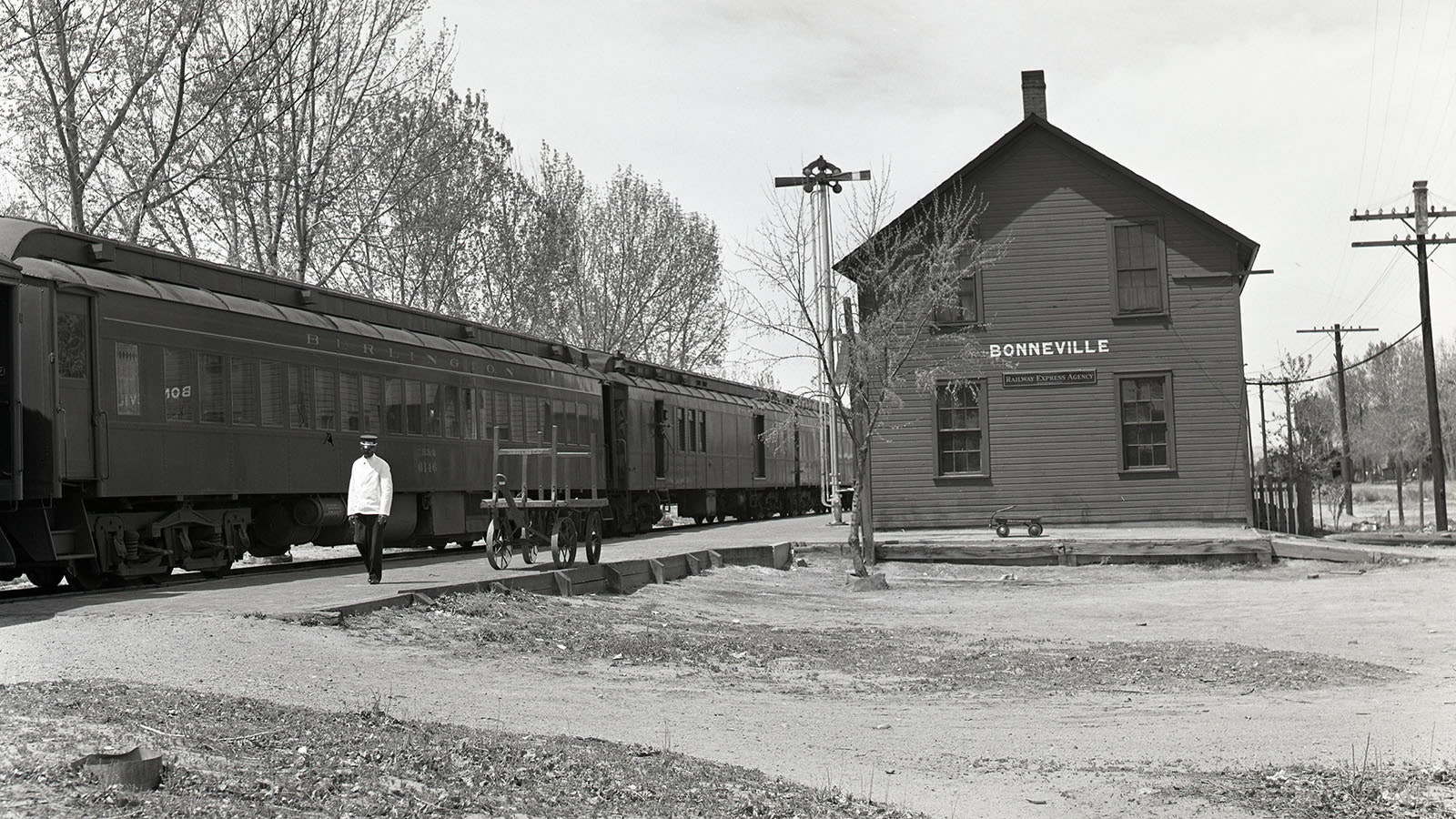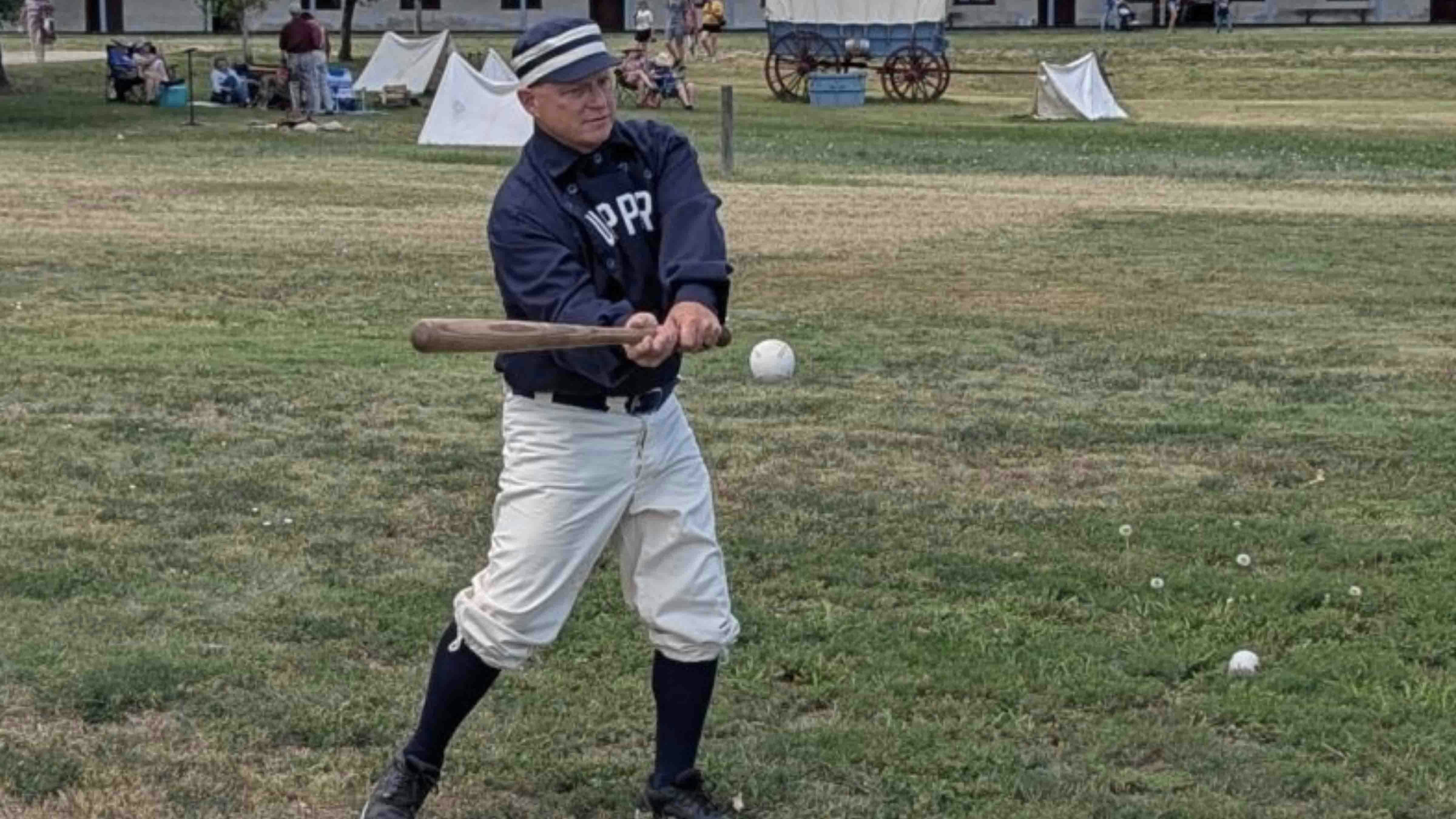A Sunday drive May 16, 1921, did not turn out well for a 30-year-old Casper man and a hitchhiker as they headed from Casper toward a Thermopolis storage warehouse.
Nelson A. Glass was at the wheel of a white truck owned by the Independent Torpedo Co. as he pulled into a gas station in Bonneville, Wyoming, 3 miles northeast of Shoshoni. He was hauling a product in the back of the truck that was manufactured at a Casper facility and used by the oil industry — cans of highly explosive and unstable nitroglycerine.
Casper oilman Bob King, who has written a history about the region’s refineries, said that in the early days of oil field exploration, nitroglycerin was put in a small canister that would be lowered down a hole and set off mechanically by slamming the canister against a solid barrier. It was used to stimulate well production.
“There were several instances where the nitroglycerine would be carried to the location in a truck and the truck would have to drive very carefully because if it hit a rough spot in the road or something, it had the potential to explode,” he said. “It was a very sensitive and very dangerous liquid to transport.”
Independent Torpedo Co.’s practice was to put the cans in heavily padded boxes to reduce the chance of mishaps.
That must have worked at least once that day because earlier during his drive, Glass went off the road at a bridge between Casper and Bonneville and became stuck. A rancher saw Glass, stopped and then went to his ranch for his horse team. He used his team to pull the truck out of the ditch.
History doesn’t say whether the rancher knew what was in the truck when he hitched his team up to it.
The Blast
Once the truck’s gas tank was filled in Bonneville, Glass and his hitchhiker passenger pulled out onto the roadway and drove about 200 yards west of the filling station when his tire hit a pothole or bump in the road.
That was the end of their journey.
“A mammoth column of dirt shot up from the spot where the truck was moving and left a hole 16 feet deep and 20 feet across,” the Casper Daily Tribune reported. “The men and the truck were literally blown to bits, small pieces of flesh and breakable parts on the car being scattered far and wide.”
The concussion from the huge explosion sent energy waves through nearby home foundations, cracking them. Shrapnel from the metal of the truck became shredded missiles tearing into siding, piercing windows and scarring anything in the way.
Any of the 150 residents of Bonneville who might have happened to be taking afternoon naps were now wide awake. The kids at play ran for parents, dogs barked and horses — wide-eyed in terror — ran circles in pastures. Miraculously, no one else was hurt.
The newspaper reported that heavier pieces of the truck were found a quarter mile away. All that was identifiable of Glass was a left hand that had a plain gold ring on it. It was recovered about 100 yards from the explosion.
Damaged Buildings
Nearly all the estimated 75 buildings in the small community were damaged.
Groceries at the Bancroft & Son were all over the floor and the Bonneville Hotel, railroad eating house and roundhouses, as well as the school and post office were damaged.
“Eyewitness stated that flames from the explosion covered fully 100 yards of the 200-yard distance to the nearest buildings,” the newspaper reported. “Structures extended in a circle on every side of the spot where the explosion occurred, and all Bonneville is congratulating itself today that none were nearer.”
A U.S. Army veteran, Glass had been on the job for the Independent Torpedo Co. for about six months transporting the highly explosive material.
Initial newspaper reports of the explosion spoke of the mystery of the rider who had accompanied Glass on his trip. The investigation of the blast by the company sent Casper’s resident Manager J. L. Wilson on a journey to retrace Glass’ route.
He spoke with the rancher and the gas station attendant in Bonneville. Their descriptions of the hitchhiker did not match Glass’ brother, who some people assumed was in the vehicle with him.
Eventually, the man who sat beside Glass in the truck was determined to have been a “tramp” who had been kicked out of the Casper’s Burlington Railroad yard the evening before his death.
Torpedo Company
The Independent Torpedo Co. was well known and worked with oil companies in several states to provide nitroglycerine and “shooters” — men who would use the explosive by putting it in a container, inserting into a well and then exploding it. The goal was to turn a dry well into a producing one.
The Casper Tribune’s “Market Gossip and Field News” column wrote about the company’s efforts Jan. 25, 1921, four months before the explosion.
“The Independent Torpedo Company recently shot two wells for the Mississippi Delta Oil Company in the Osage field and these two wells were producing about 20 barrels a day when the shot was put in, now the wells are making over 150 barrels a day,” the newspaper reported.
Just a month before the explosion, the United States Rubber Co. announced nationally that it had developed rubber boots to go over nitroglycerine cans to make the product safer during transport. It is unlikely those boots were on the cans in the truck that blew up in Bonneville.
The blast at the Bonneville site in 1921 was the first for the Independent Torpedo Co. in a year. Several similar tragedies had happened in the oil field in previous years.
The Casper Daily Tribune editorialized May 25, 1921, that the transportation of nitroglycerine needed more attention from the companies involved and better regulation from authorities.
“The explosion very easily could have taken place on the streets of Casper and aside from the toll of human life, a million dollars in damage could have resulted,” the paper wrote.
Nitro As Extinguisher
King said in addition to stimulating a well to bring about more production, nitroglycerine was used occasionally when oil wellhead fires got out of control.
“The theory behind that was that the nitroglycerine would explode and suck all of the oxygen out of the air and thereby eliminating the source of the fire,” he said. “And that is the same theory that is used in current-day oil well blowouts where dynamite would be purposely exploded at the wellhead to extinguish the oxygen and thereby eliminate the fuel for a fire.”
King said he did not know when the nitroglycerine was replaced by other methods, but he was involved in a job in the 1980s where the substance was used for a well abandonment. It was put down the hole and then exploded to cut off the casing and then the casing was recovered.
Today, the oil field industry uses pressurized water and other fracking techniques instead of explosives to stimulate the flow of product from the bottom of an oil or gas hole.
Meanwhile, on Wednesday, June 1, 1921, a few weeks after the Casper editorial, The Northern Wyoming Herald reported another incident involving the explosive — this time not involving the oil industry.
In that mishap, a worker on a Worland, Wyoming, ranch was apparently trying to repair a metal flume. He chose for his purpose some cans tossed outside an “old nitroglycerine factory” that existed somewhere in the region.
“A can on which he was pounding exploded, tearing off his right leg and otherwise terribly tearing him to pieces,” the newspaper reported.
Dale Killingbeck can be reached at dale@cowboystatedaily.com.

